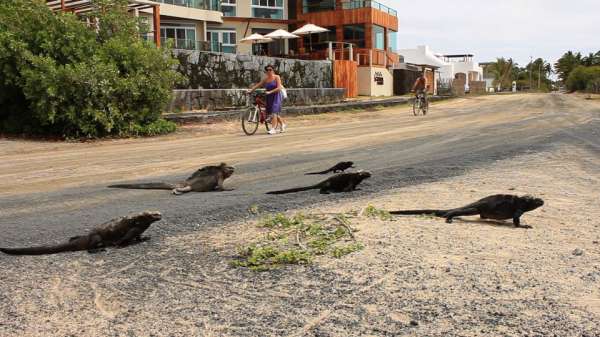Climate change is profoundly affecting weather patterns and oceanic phenomena worldwide, and the El Niño-Southern Oscillation (ENSO) is no exception. ENSO, characterized by El Niño and La Niña events, has significant impacts on marine life, weather, and ecosystems in the Pacific Ocean, including the coasts of Ecuador and the Galapagos Islands. Here’s how climate change is expected to influence the El Niño effect on marine life in these regions:
1. Intensified El Niño Events:
- Climate change is projected to lead to more frequent and intense El Niño events. El Niño typically involves the warming of sea surface temperatures in the equatorial Pacific, which can disrupt marine ecosystems.
- The warming of the Pacific Ocean during El Niño events can lead to changes in ocean currents, affecting the distribution and migration patterns of marine species. Some species may thrive in these altered conditions, while others may struggle to adapt.
2. Impact on Fisheries:
- El Niño events can disrupt local fisheries in Ecuador and the Galapagos Islands. Warmer waters can lead to changes in the distribution and abundance of fish species, impacting the livelihoods of local fishing communities.
- Climate change-induced El Niño events may lead to shifts in the timing and location of fish migrations, making it challenging for fishermen to predict where to find their catches.
3. Coral Bleaching:
- Rising sea temperatures associated with climate change can exacerbate the effects of El Niño on coral reefs. During El Niño events, the Galapagos Islands have experienced coral bleaching, a phenomenon where corals expel their symbiotic algae, resulting in coral death.
- The combination of El Niño and climate change can reduce the resilience of coral reefs, making it harder for them to recover from stress events.
4. Altered Oceanic Conditions:
- Climate change can lead to shifts in oceanic conditions, such as ocean acidification and decreased oxygen levels, which can further stress marine ecosystems during El Niño events.
- These altered conditions can impact the abundance and distribution of phytoplankton and zooplankton, the base of the marine food web, affecting the entire marine ecosystem.
5. Impacts on Endemic Species:
- The Galapagos Islands are home to unique and endemic species, many of which are highly specialized and adapted to specific environmental conditions. Climate change-induced El Niño events can disrupt these conditions, putting endemic species at risk.
- Species like the Galapagos penguin, marine iguana, and giant tortoise may face challenges related to changes in food availability and habitat disruption.
6. Adaptation and Mitigation Strategies:
- To address the impacts of climate change and El Niño events on marine life, conservation and management efforts are crucial. These efforts may include establishing marine protected areas, implementing sustainable fishing practices, and monitoring ecosystem health.
- Climate change mitigation, such as reducing greenhouse gas emissions, remains a critical long-term strategy to limit the frequency and intensity of El Niño events and their associated impacts.
In conclusion, climate change is expected to exacerbate the effects of El Niño events on marine life off the Pacific coast of Ecuador and the Galapagos Islands. These changes have far-reaching implications for ecosystems, fisheries, and the livelihoods of local communities. To safeguard these precious marine environments, it is essential to implement proactive conservation measures and address the root causes of climate change through global efforts to reduce carbon emissions.



Comments